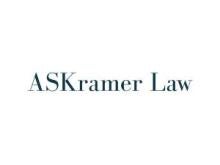Businesses often manage their price risks by hedging those risks with financial derivative contracts. Because businesses generate ordinary income and loss on their normal business activities, they want to be sure their hedging activities also generate ordinary tax treatment. If these hedging activities were to generate capital gains and losses, they would be basically worthless for many businesses. As a result, business taxpayers want to be able to net their hedging gains and losses against gains and losses on their normal business activities. (See my article, “Hedging: Favorable Tax Treatment Requires Careful Compliance.”)
Tax Hedge Identification Requirements
In order to receive favorable tax treatment, a hedge (Hedge) must be clearly identified “before the close of the day on which it is acquired, originated, or entered into.”[1] The item (or items) being hedged (Hedged Item) must also be identified on a “substantially contemporaneous”[2] basis, but not more than 35 days after the taxpayer enters into the Hedge. And, the tax hedge accounting method must “clearly reflect income.”
In order to comply with these requirements, taxpayers can either establish an aggregate hedge program where they enter their Hedges into a designated hedge account, or they can attach a notation to a Hedge identifying the specific transaction as a “Hedge.” Either way, taxpayers must unambiguously and timely identify their Hedges and Hedged Items. Simply identifying a hedge for financial accounting purposes is not good enough because the hedge identification must clearly state that the identification is for tax purposes.
The Best Laid Plans
So what happens if a taxpayer fails to unambiguously and timely identify the Hedge and the Hedged Item? Mistakes and errors happen. Tax identification can slip through the cracks. Sometimes the employee responsible for proper identification leaves the company and that responsibility is not promptly assigned to someone else. There are many reasons why tax identifications are made late, are incomplete, or are missed entirely. To discourage incomplete or omitted identification, the Code imposes so-called whipsaw rules that treat the gains on misidentified hedge transactions as ordinary and losses as capital.[3] This is a seriously adverse tax result. In limited circumstances, however, a taxpayer can escape the consequence if the failure to provide a proper identification was due to an “inadvertent error.”[4]
Inadvertent Error
Treas. Reg. §1.1221-2(g)(2)(ii) provides that a taxpayer can treat gains and losses on hedges that it has failed to identify if the failure was due to an “inadvertent error.” Unfortunately, neither the Code nor the Treasury regulations define inadvertent error. All we’ve got to go on in this regard is one private letter ruling and two Chief Counsel Advice Memoranda. These documents are not the type of guidance that taxpayers can rely on or cite as precedent. Nevertheless, they are instructive, however, because they give us a look into what the IRS views as inadvertent error.
In LTR 200051035 the IRS stated, “In the absence of a specific definition in the regulations, the term ‘inadvertent error’ should be given its ordinary meaning. . . . The ordinary meaning of the term ‘inadvertence’ is ‘an accidental oversight; a result of carelessness.’”[5] This view seems sensible and entirely appropriate.
Three years later, in CCA 200851082 the IRS Chief Counsel said that the “Taxpayer should bear the burden of proving inadvertence, and its satisfaction should be judged on all surrounding facts and objective indicia of whether the claimed oversight was truly accidental.... The size of the transaction, the treatment of the transaction as a hedge for financial accounting purposes, the sophistication of the taxpayer, its advisors, and counterparties, among other things, are all probative.”
Fair enough, but shortly thereafter, the IRS expressed its displeasure with taxpayers that should have known better and explained when taxpayers can rely on the inadvertent error excuse to receive tax hedge treatment. In CCA 201046015, the IRS Chief Counsel’s Office said that the failure to promptly address failed or improperly identified hedges would undercut a taxpayer’s inadvertent error claim; and that the inadvertent error exception is not intended to “eviscerate” the hedge identification requirements. The IRS went on to state, “Absent a change in the regulation, [it saw] no compelling policy justification to read the inadvertent error rule as an open-ended invitation for taxpayers to brush aside establishing hedge identification procedures.” A taxpayer’s claim of ignorance of the requirement for hedge identification is no excuse and is not grounds for claiming inadvertent error. In other words, inattention to the hedge identification requirements cannot be excused simply by asserting inadvertent error.
CONCLUSION
Notwithstanding the regulatory provision that provides an “inadvertent” error is an excuse for failing to timely identify hedges, it is now clear that the IRS is only willing to entertain an inadvertent error claim in very limited circumstances. Taxpayers have very little hope of being able to rely on this excuse to avoid the whipsaw rule if they do not properly identify their hedging transactions. This is just one more reason why taxpayers must treat the hedge identification requirement with care and seriousness. Failure to do so can have severe tax consequences.
[1] Code § 1221(a)(7).
[2] Treas. Reg. § 1.1221-2(f)(2).
[3] Code § 1221(b)(2)(B).
[4] Treas. Reg. § 1.1221-2(g)(2)(ii).
[5] Dec. 22, 2000.




 />i
/>i

